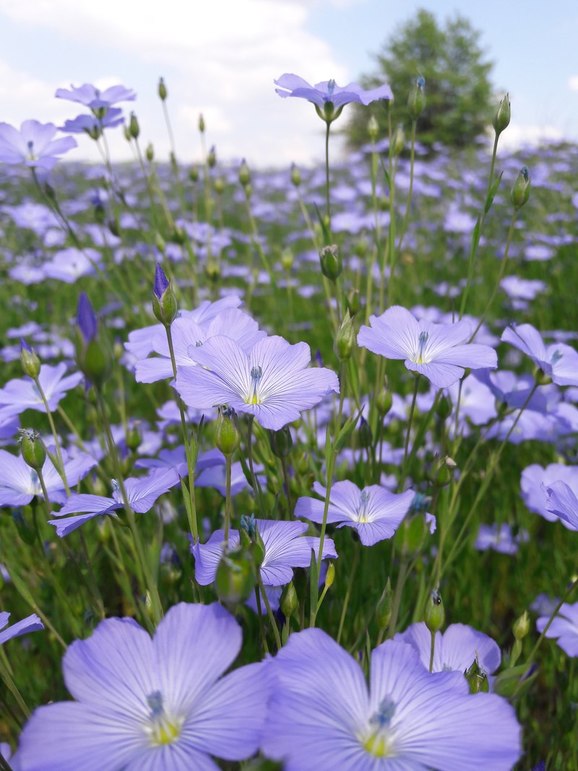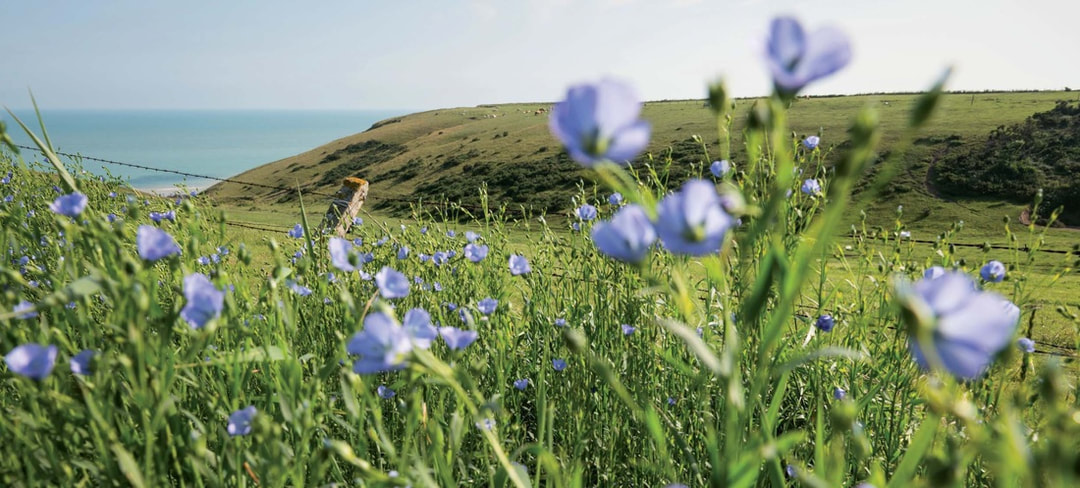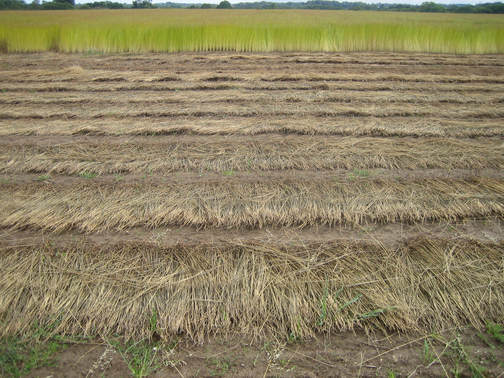Natural and hand-dyed linen yarn
Linen has numerous natural qualities
All these qualities make linen ideal for warm weather knits, but why limit it to spring and summer garments?
With such benefits, it can be used all year round.
With such benefits, it can be used all year round.
|
Linen:
|
|
From flax to yarn..... a truly eco-friendly fibre.
Here are some reasons why linen is a truly eco-friendly fibre:
- The whole flax plant can be used, leaving no waste.
- Flax grows naturally and requires no irrigation and grows with little, if any, help from potentially dangerous chemicals
- Because it’s a natural fibre, flax linen is recyclable and biodegradable.
- Flax is gentle on the land and is easy to incorporate into modern crop rotation cycles, preventing soil depletion.
- Very little energy is required to process flax. The production process is mainly mechanical (see below)
- Linen yarn is inherently strong, which reduces the need for starching during spinning and weaving.
- Flax linen is many times stronger than cotton, which means clothing and upholstery made from linen are made to last, rather than end up in landfill.
Linen production process

Linen is made from the fibre of the flax plant. It is a bast fibre which means it is collected from the inner bark, or bast surrounding the stem of the plant. Flax fibres vary in length from about 25 to 150 mm (1 to 6 inches) and average 12-16 micrometres in diameter.
The flax growing cycle is brief, with only 100 days between sowing in March and harvesting in July. The plant flowers very briefly, dotting the fields with blossoms of violet, blue and white. Each flax plant blooms for one day only.
The production process is a lengthy, labour-intensive one, and quite complicated. It is carried out by purely mechanical means or by hand.
This explains why linen is a more expensive fibre, more expensive than other fibres, like cotton for example.
The flax growing cycle is brief, with only 100 days between sowing in March and harvesting in July. The plant flowers very briefly, dotting the fields with blossoms of violet, blue and white. Each flax plant blooms for one day only.
The production process is a lengthy, labour-intensive one, and quite complicated. It is carried out by purely mechanical means or by hand.
This explains why linen is a more expensive fibre, more expensive than other fibres, like cotton for example.
Different stages of the production process
Harvesting - Flax must be treated carefully, so to preserve the full potential of each plant, flax is never mowed but must be uprooted. Until the second half of the 20th century, this was painstakingly done by hand. Today, it is done mechanically.
Retting and Turning - The woody core and pectin which binds the fibres together must be allowed to naturally decompose in the process known as retting. The preferred method requires the intervention of nature as the flax is spread out in the fields and exposed to rain, dew and sunshine for several weeks.
Scutching (stripping) and Hackling (combing) - During these mechanical processes the fibres are separated from the outer layer (shive), and then graded into the short fibres (tow fibres) which is used for coarser yarns, or the longer fibres (line fibres) which will be used to create the finest linen yarn.
Spinning - Drafting and carding draw out the long or short fibres into sinuous "ribbons" which are then plied together on spinning looms in various weights and thicknesses. The fine long fibres are "wet spun" to impart a smoother, shiny appearance. The shorter tow fibres are usually "dry spun" yielding a less regular and coarser yarn.



